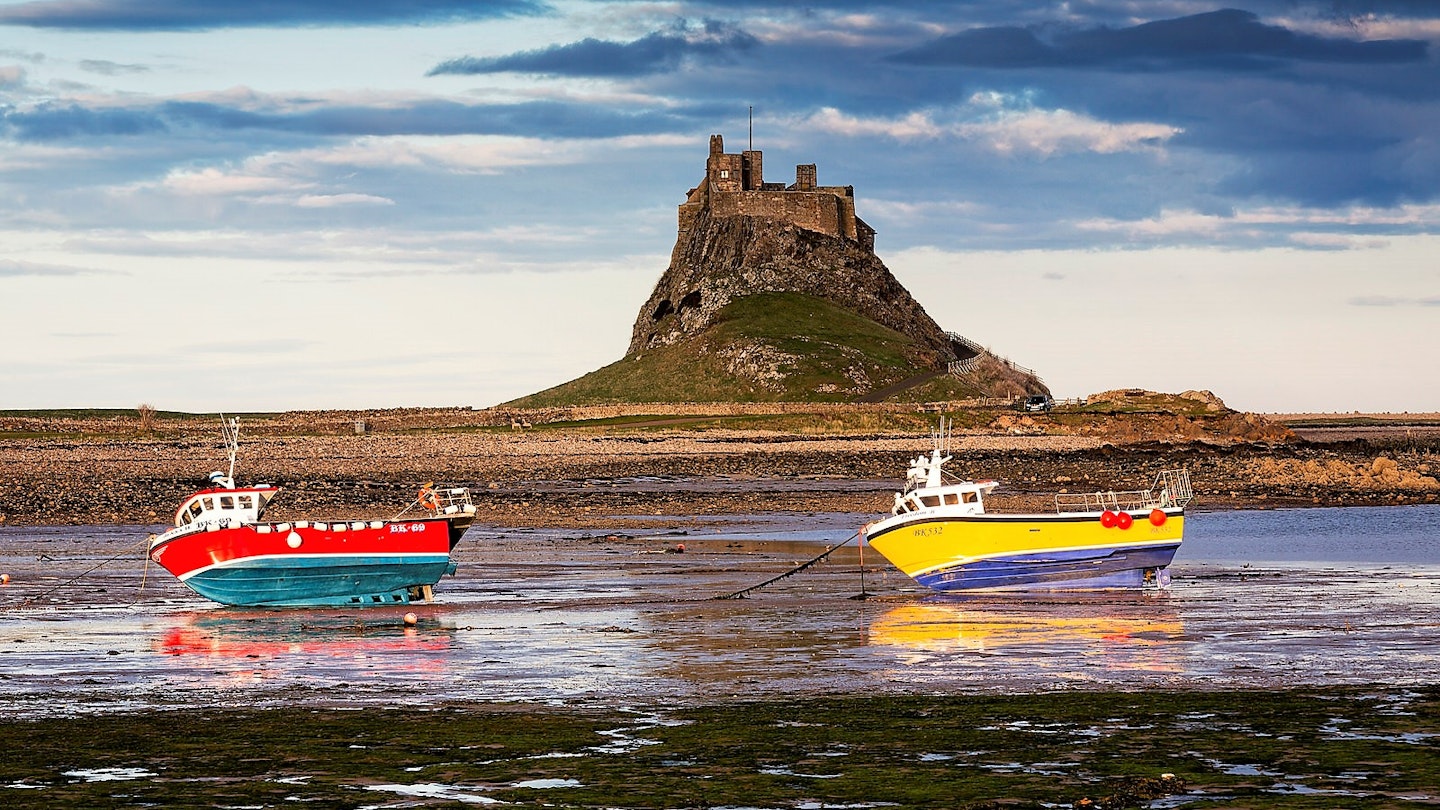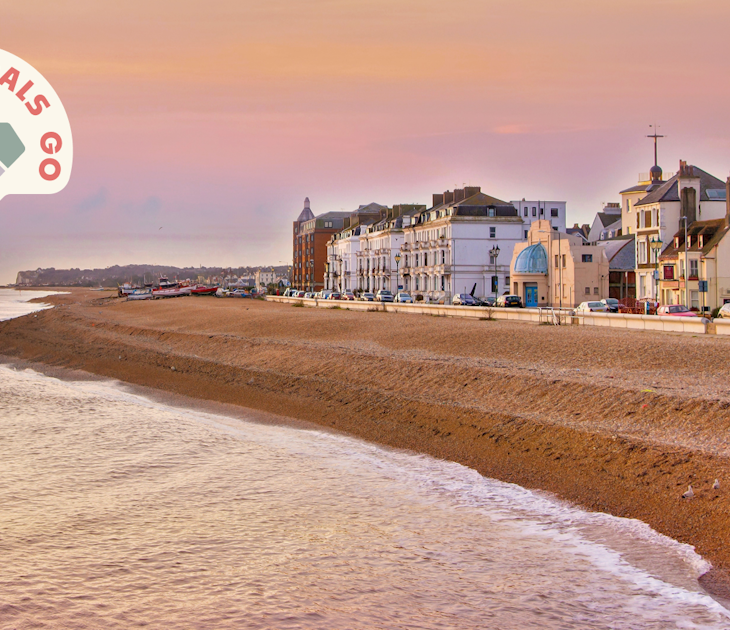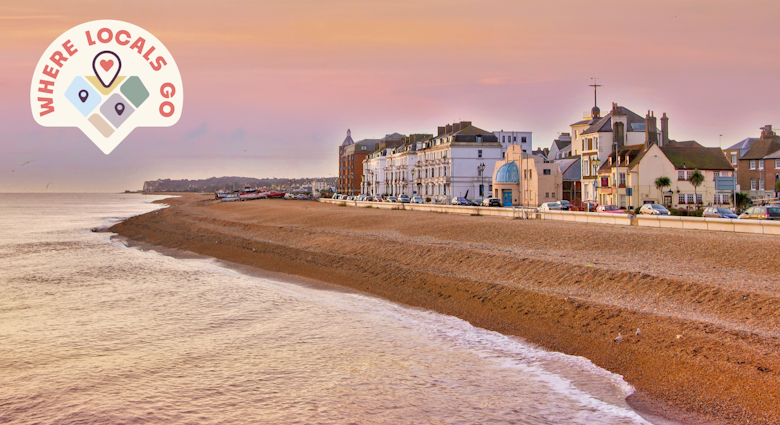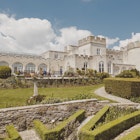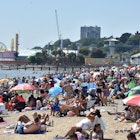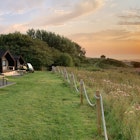A thin trickle of sea water crosses our path, chasing the wheels of the car: tread carefully, it warns. When the causeway to Lindisfarne has only just opened and the winds are up, driving over it can feel a bit like fording a river. Cautionary signs are placed along the road telling tourists that crossings must be undertaken according to the natural law of the tides, but every month people still get caught out.
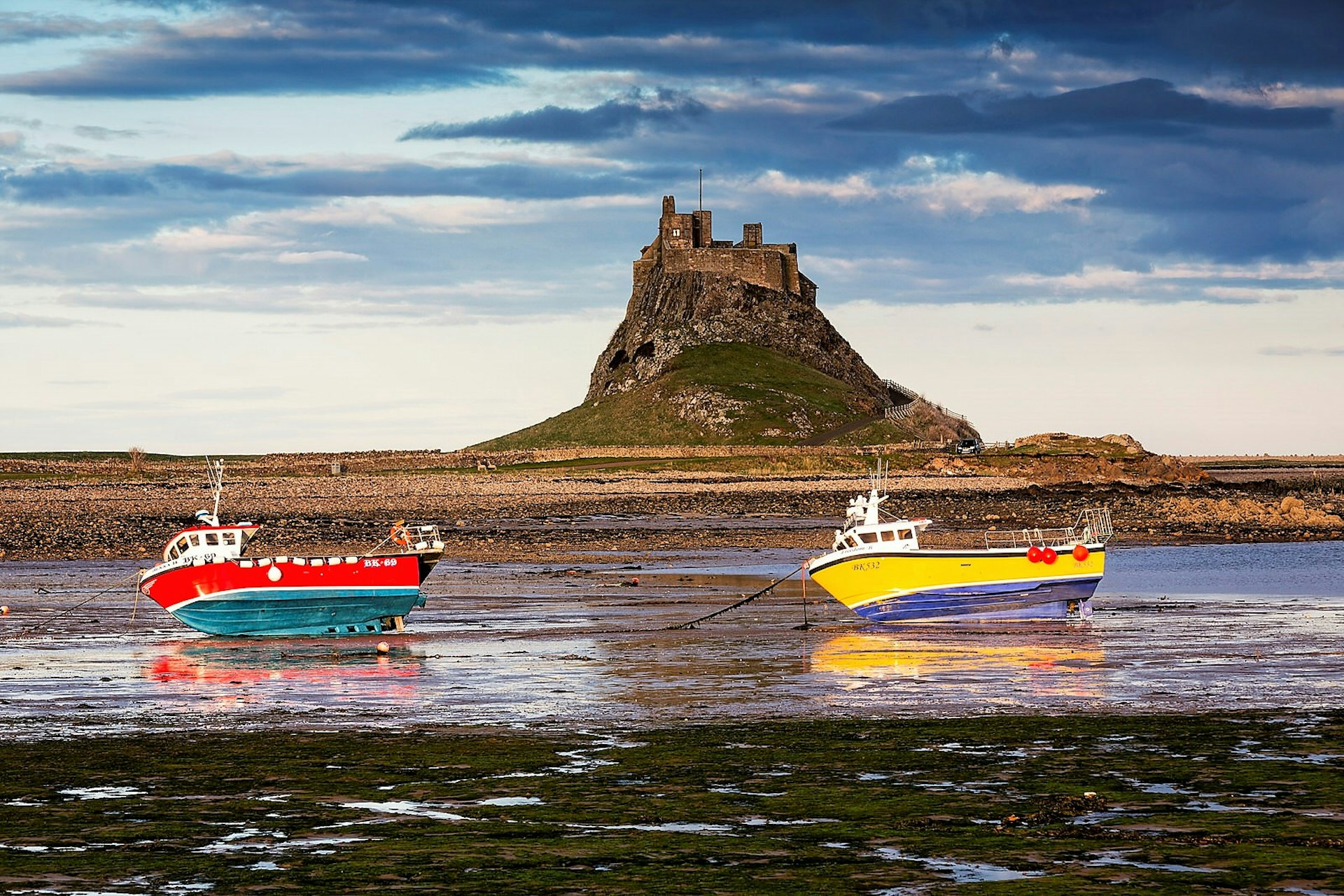
Twice a day, this tiny island, linked to the coast of Northumberland by a thin spit of sand, is cut off by the North Sea. Life revolves around the tides, just as it has done for more than a thousand years. It was this semi-permanent isolation that first attracted monks in the 7th century. One in particular, Aidan (later St Aidan), left a mark on the island so indelible that many people still only know it by the name bestowed by its medieval monastery: Holy Island. It is this name, and not Lindisfarne, that welcomes us on a sign as we rumble over the rutted sands and make it to the island.
Birthplace of British Christianity
St Aidan, an Irish monk, founded a monastery on Lindisfarne in AD 635 so he could use it as a base to convert the Northumbrian people to Christianity at the behest of Northumbria’s Christian King Oswald. His mission was so successful that today the island is considered the cradle of British Christianity and has become a place of pilgrimage for the devout from all over the world. Around the time of Aidan’s death came Cuthbert, a Northumbrian priest who eventually rose to Prior of Lindisfarne and became a respected bishop. He was buried on the island (though his remains ended up in Durham) and made a saint in AD 698.
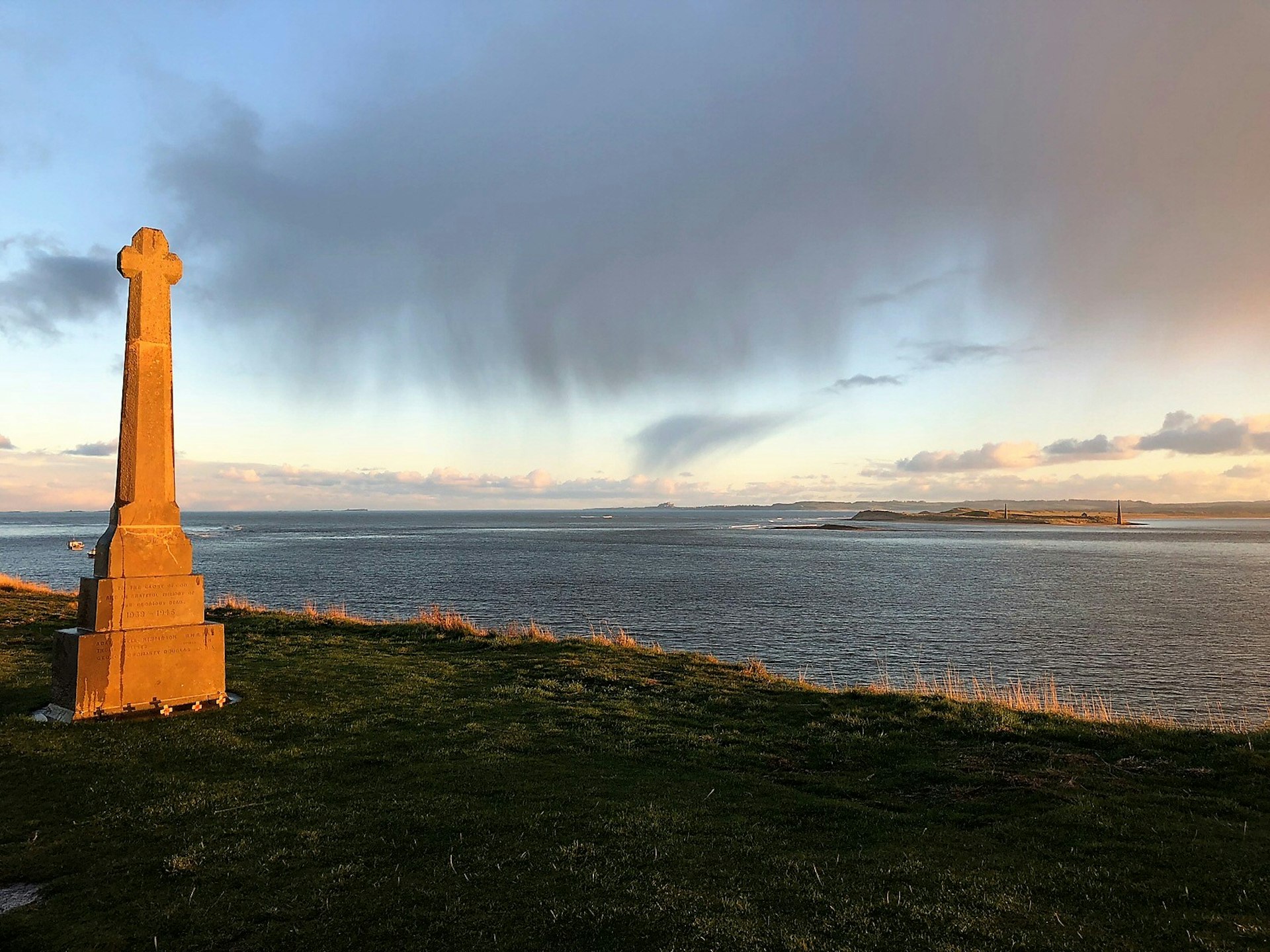
It is thanks to these two rock stars of British Christianity that prayer beads, crucifixes and other religious paraphernalia are the type of retail candy on offer in the handful of shops on Holy Island. ‘We get a lot of pilgrimage groups. Some are small, but some are massive – like 100 people,’ says the Post Office clerk.
Each morning when the tide abates, the opening of the Lindisfarne crossing is marked by a steady flow of one-way traffic as day-trippers, hikers and workers head over the causeway. The permanent population of the island is around 50, so many of the people who work here are from the mainland. Bar shifts in the village pubs are set around the tide timetables. The local convenience store sells essentials, but the nearest supermarket is a 20-minute drive away (tide allowing) in Berwick-upon-Tweed. There’s no emergency healthcare on the island. And when the local kids reach high school age, they have no option but to board at a private school on the mainland.

To live here, people must submit to the daily routine of Mother Nature in the most singular way. ‘You adapt,’ shrugs one local. Many of the residents have lived here for generations, but a few have moved to Lindisfarne for the way of life, which feels more in tune with nature than most other places in the UK. The island and its surrounding waters and mudflats are protected spaces, and an important migratory environment for Arctic geese and other birds in winter. Nearby, the Farne Islands (where St Cuthbert spent protracted periods as a hermit) attract year-in-year-out visitors for their important seal populations, flocks of guillemots that swamp the rocky shores in summer, and cute puffins.
Day-tripper appeal
Along with the excitement of getting here, most day-trippers come to Holy Island for the castle. Picturesquely enthroned upon a rocky outcrop that looks too perfect to be nature’s work, Lindisfarne Castle dates to the mid-16th century, but was remodelled by Edwin Lutyens in the early 1900s as a house for the Hudson family.
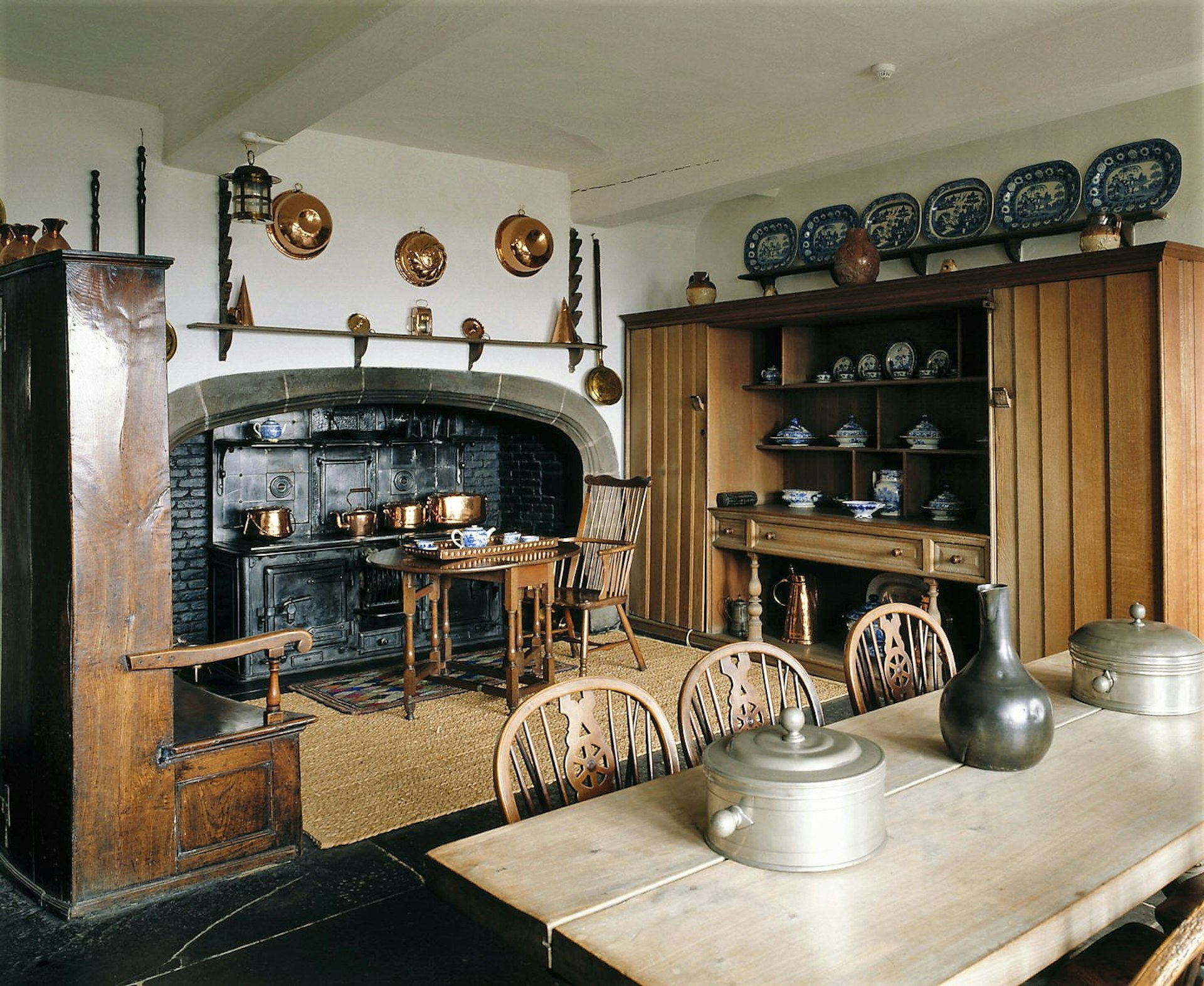
The 15-minute walk here from the island’s one and only village hugs the coastline of a rocky bay where upturned boats act as fishermen’s huts (crab and oysters are big business on the Northumberland coast). Across the bay, it’s possible to see the hazy but awesome outline of Bamburgh Castle glowering back. Navigational obelisks, looking like sentinels from an Egyptian temple, are still visible on surrounding shores, erected in the 1820s to guide ships into the bay.
Closer to the castle, wooden spires protrude from the shallow sea bed, all that remains of an old jetty which once brought limestone to the kilns beneath the castle. Those 19th-century kilns can still be visited, the air inside powerfully armed with the stench of sheep's droppings. Around the back of the castle, visitors meander through a quaint walled garden marooned in a sea of grass. It was created in the early 20th century to divert guests of Sir Edward Hudson, who owned the castle at the time it was remodelled by Lutyen, but is planted on the site of a vegetable patch that once fed soldiers. Visit in July or August to see it bloom.
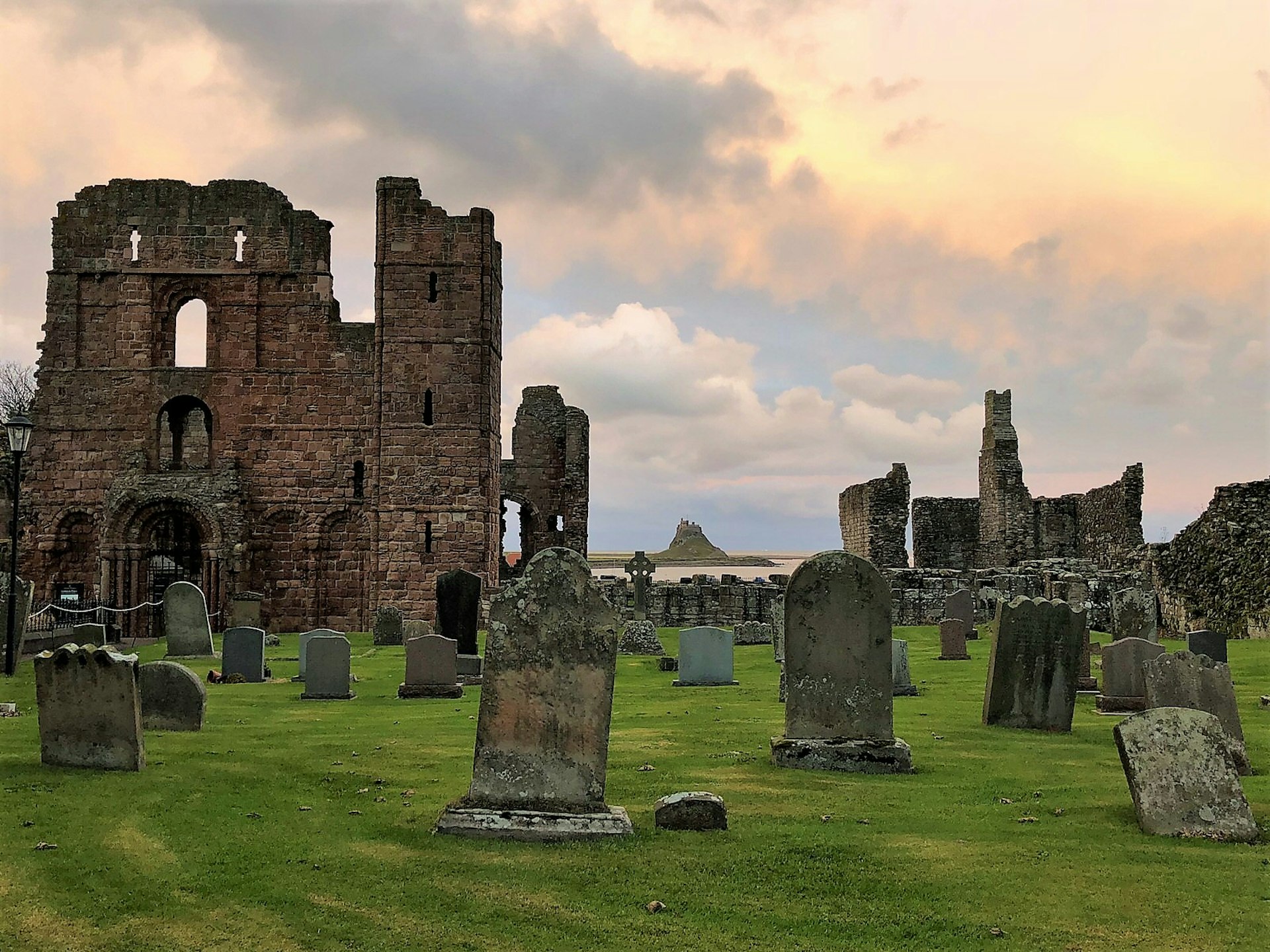
Lindisfarne’s other main attraction is the Priory. Repeated Viking invasions forced the community of monks to flee in AD 875, eventually settling in Durham, but the island exerted a magnetic pull that led Benedictine monks to resettle here in the 12th century. The priory they built on the site of St Aidan’s original wooden church – in the image of nearby Durham Cathedral – is testament to the island’s religious gravity. What remains today is a mixture of ruin, museum and local parish church. Inside, beside a haunting wooden sculpture of St Cuthbert’s burial, it’s possible to see a copy of the important Lindisfarne Gospels – the most richly adorned religious text ever created in the UK, thought to have been made on the island (the original now resides in the British Museum in London).
Modern Lindisfarne
It's more than just the castle and priory that make Lindisfarne unique. When the tide calls and the day-trippers make their exit, a hush descends on the island village as it is reclaimed by locals. Shops, with hours dictated by the tidal crossing windows, close their shutters and residents retreat to the pubs and their warming fires. There are two, the Crown & Anchor and the Ship Inn, both excellent in their own way. The former is good for food, while the latter produces its own gin. ‘We started off making it in a 2-litre copper still in the pub’s back room and just selling it ad hoc, but it was so popular the owner bought a 100-litre American Moonshine still that can make 90 bottles a run,’ explains the bar man. They now make four or five batches a week to keep up with demand.
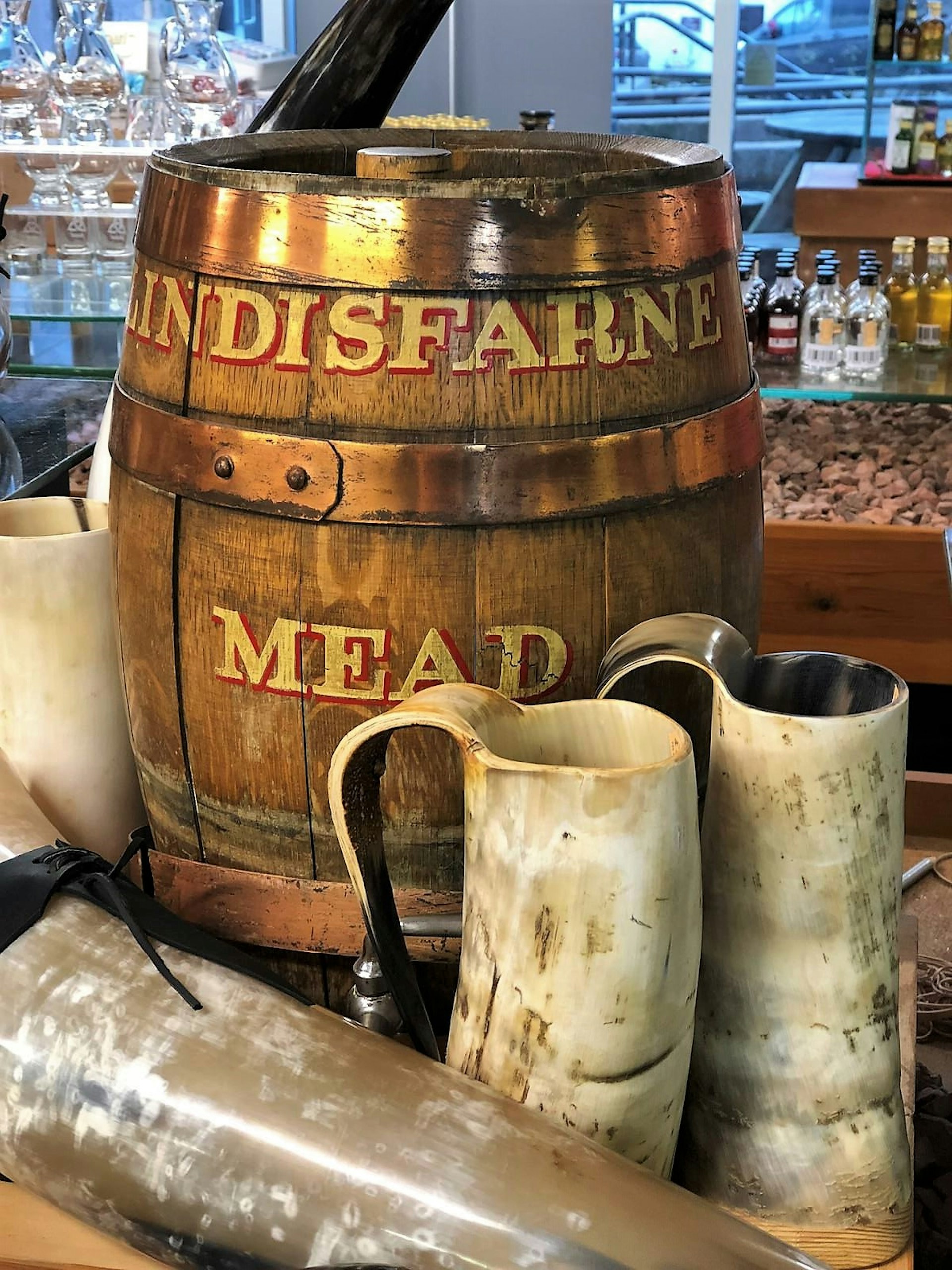
There’s also an island meadery, the trend for which was started by the monks 1200 years ago, and a coffee roastery and cafe, which has proved so popular that the backyard yurt in which the coffee used to be roasted has just been torn down to make way for a new micro-factory in the form of a couple of shipping containers.
Business is clearly booming on Lindisfarne, and the curious currency of this island – its daily tussle with the sea – is proving more attractive than ever.
Make sure you're ready for anything with travel insurance from our trusted partners.
https://shop.lonelyplanet.com/products/england-travel-guide-9
